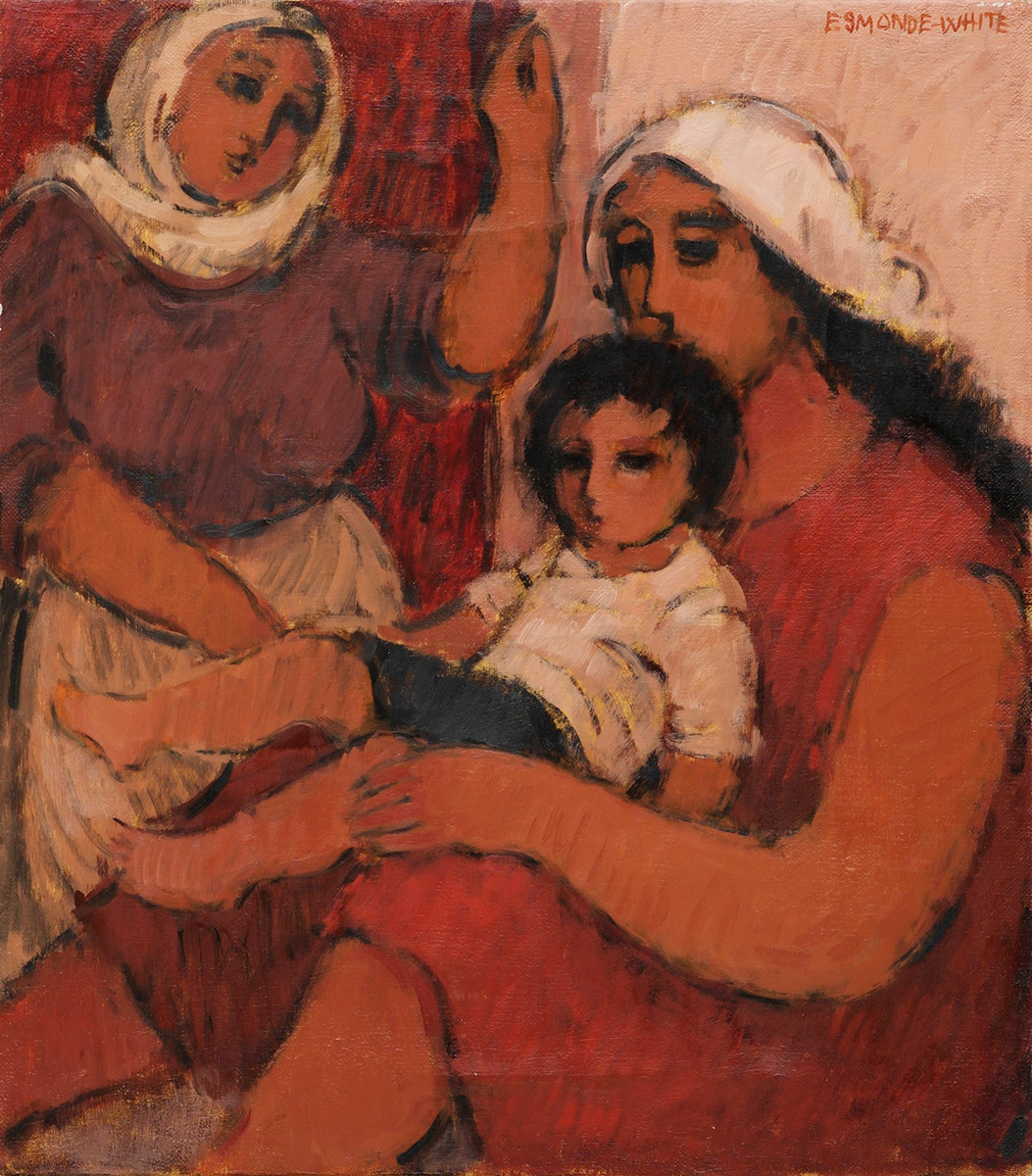Eleanor ESMONDE-WHITE (1914 – 2007)
BIOGRAPHY
Eleanor Frances Esmonde-White was born into a mixed Irish, English and Australian family in Dundee, in what was then the British Colony of Natal (now KwaZulu-Natal).
Esmonde-White was a painter, graphic artist and muralist. She is also known for her
woodcuts.
She began her art studies at the University of Natal (now the University of KwaZulu-Natal) in 1932, and was granted a scholarship by renowned architect Sir Herbert Baker to continue her studies at the Royal College of Art in London and the British School in Rome. In 1938, she and Le Roux Smith Le Roux (1914–1963) were jointly commissioned to create a mural decorating a room of the new South Africa House building on Trafalgar Square, which had been designed by Baker. Noting the absence of representation of black people in the art at South Africa House, it was Esmonde-White’s idea to create a large mural that extended around all four walls depicting the customs, rites and ceremonies of the AmaZulu people. Named The People of Heaven, it took four years to complete.
She remained in London during World War Two and was in the company of writer Uys Krige, Victor Norton (later editor of the Cape Times) and other correspondents from South Africa amongst the enormous crowd that gathered in Piccadilly Circus to celebrate when Winston Churchill announced that the war with Germany was over. After the war, she suffered a nervous breakdown.
She returned to South Africa in 1949, and took up a position lecturing design at Michaelis School of Fine Art, where she taught for 12 years. She was a member of the New Group.
She had her first solo exhibition in Cape Town in 1952. In the late 1950s and early 60s,
she designed stage sets and costumes for ballet, opera and drama productions at the University of Cape Town and at CAPAB (Cape Performing Arts Board – one of the four state-funded performing arts councils in the four former provinces of South Africa). This influenced her work, which features women rendered in warm, strong colours.
Esmonde-White carried out numerous public commissions – from a special Africana book
display for the South African Library (now the National Library of South Africa) in 1952, to large mosaic designs for the Cape Provincial Library Services building, to a tapestry for the Baxter Theatre in 1977. In her exhibition at Die Kunskamer that same year, she included work she had produced during a visit to the island of Corfu in Greece.
In 1981 Esmonde-White joined her Greek husband in permanent residence in Corfu, where she observed women in their daily domestic work, engaging with each other during their busy day, working the land while their husbands spent time in the Greek cafés.
Esmonde-White had a strong social conscience. In the words of fellow artist and friend Peter Clarke (1929 – 2014), she was ‘progressive’ and ‘politically positive’. In 1958 she donated two graphic works to be auctioned in aid of the Treason Trial Defence
Fund. Her relief etching Reclining Figures was reproduced on the front page of the auction catalogue. The other work was a lithograph, African Figures.
In the 1960s, she also gave some artworks to be auctioned to help cover the legal fees for
the Rivonia Trialists. She also participated in an exhibition protesting proposed forced removals and demolitions for the Bo-Kaap area.
She was fiercely independent, travelled extensively and loved her work. A monograph written by Leanne Raymond, based on interviews with the artist, was published in 2015.


